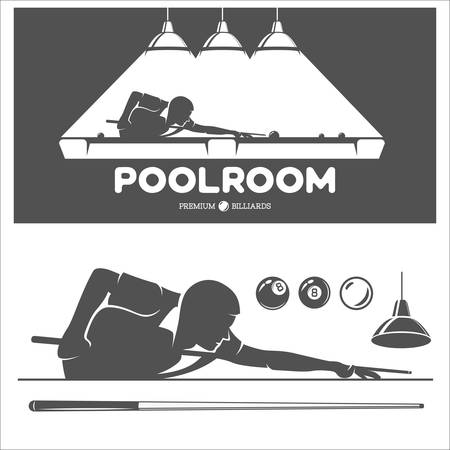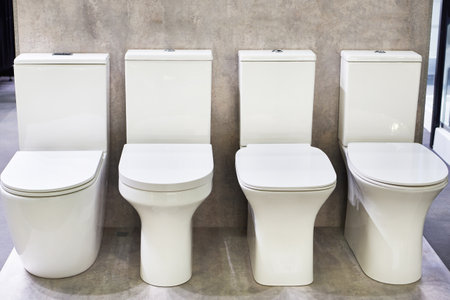Understanding Common Plumbing Issues in British Bathrooms
When it comes to the quintessential British home, character and tradition often go hand in hand with practical challenges—especially in the bathroom. Many residences across the UK boast original features and period charm, yet these very attributes can give rise to a host of plumbing complications. Older properties frequently retain their initial piping systems, which may be constructed from outdated materials such as lead or galvanised steel. Over time, these pipes are prone to corrosion, blockages, and even leaks, posing ongoing maintenance concerns for homeowners. Additionally, the unique layout of British bathrooms—often compact and ingeniously designed to fit into awkward corners or under stairs—can make access to plumbing fixtures a true test of ingenuity. These factors not only complicate repairs but also contribute to persistent issues like slow drainage, low water pressure, and temperamental heating systems. In this context, addressing plumbing challenges is more than a matter of convenience; it’s essential for preserving both comfort and heritage. By understanding these common problems, we can begin to explore holistic remedies that blend practical solutions with time-honoured philosophies such as Feng Shui, offering a fresh perspective on harmonising modern living with traditional British architecture.
2. The Basics of Feng Shui in the British Context
Feng Shui, an ancient Chinese practice centred around harmonising individuals with their environment, has been embraced worldwide for its potential to create balance and positive energy within homes. In Britain, where architectural heritage ranges from Victorian terraces to modern new-builds, integrating Feng Shui into bathroom design requires both sensitivity to tradition and openness to contemporary adaptation. At its core, Feng Shui in a bathroom setting aims to control the flow of water — symbolic of wealth and prosperity — while mitigating any loss of good fortune that might be “washed away” through plumbing fixtures. British bathrooms, often compact and shaped by period features or modern minimalism, present unique opportunities and challenges for applying these principles. By understanding and adapting key tenets such as placement of fixtures, choice of materials, and the overall layout, homeowners can enjoy not only practical improvements but also enhanced wellbeing.

3. Harmonising Water Flow: Feng Shui Tips for Bathroom Layouts
In the context of British homes, bathroom layouts often contend with limited space and unique architectural quirks, from Victorian terraces to contemporary flats. Feng Shui principles offer practical guidance for optimising both water flow and positive energy, or “chi,” within these spaces. Begin by ensuring that the path between the bathroom door and key fixtures—such as the sink, toilet, and shower—is clear and unobstructed. This promotes smooth energy circulation and mirrors the importance of free-flowing water in both plumbing functionality and symbolic prosperity.
When considering fixture placement, avoid positioning the toilet directly opposite the bathroom door—a common layout in many UK properties—as it can symbolically drain positive energy from the room. Instead, where possible, use a partial screen or tasteful partition to subtly shield the toilet from direct view while maintaining an open feel. For British bathrooms with windows above baths or sinks, ensure these remain clean and unblocked; natural light enhances both aesthetic appeal and energetic harmony.
Another practical tip is to keep drains well-maintained and covered when not in use. In Feng Shui, exposed drains are believed to allow wealth and vitality to escape, so regularly checking for blockages is both a spiritual and practical act. Incorporate soft accents such as wooden bath mats or gentle curves in shelving to echo natural forms—a nod to traditional British craftsmanship blended with Eastern philosophy.
Finally, balance moisture control with ventilation by installing extractor fans or opening windows regularly. Not only does this prevent mould (a frequent challenge in the UK’s damp climate), but it also invites fresh chi into the space. By respecting both structural norms and embracing subtle design tweaks, British homeowners can harmonise their bathrooms for optimal well-being.
4. Addressing Damp and Leaks: Cultural Remedies and Feng Shui Insights
In the British Isles, where frequent rainfall and fluctuating temperatures are part of everyday life, dampness and leaks in bathrooms are perennial concerns. Traditionally, homeowners have tackled these challenges with a combination of practical expertise and time-honoured customs. At the same time, the rising popularity of Feng Shui offers a complementary perspective, blending ancient wisdom with modern British sensibilities to create balanced, healthy living spaces.
Conventional British Solutions to Damp and Leaks
British homes often feature robust building practices aimed at keeping moisture at bay. From proper ventilation to the use of waterproof materials, prevention is key. Regular inspections for leaking pipes, sealing around baths and showers, and employing dehumidifiers are all standard measures. The table below outlines some typical British responses to bathroom moisture issues:
| Issue | Traditional Solution |
|---|---|
| Damp Walls | Install extractor fans; open windows after bathing; use anti-mould paint |
| Leaks | Regular plumbing checks; replace worn washers; seal joints with waterproof silicone |
| Mildew & Mould | Clean affected areas with vinegar solution; improve airflow; use mould-resistant grouting |
Feng Shui Approaches to Moisture Management
Feng Shui views water as a powerful symbol of wealth and energy flow. However, unchecked water—such as persistent leaks or damp—can signal stagnation or loss of prosperity. According to Feng Shui practitioners, it is vital to ensure that all plumbing is well maintained and that the bathroom is kept dry and fresh. Some recommended adjustments include:
- Ensuring drains are clear and water flows freely, preventing energy (Chi) from becoming stuck or blocked.
- Placing live plants in the bathroom to absorb excess moisture and promote positive energy circulation.
- Using light, airy colours on walls to reflect light and reduce the heavy feel associated with dampness.
Blending Tradition with Modern Insight
The most effective approach lies in harmonising both traditions: combining reliable British maintenance with mindful Feng Shui design principles. By addressing practical concerns while also considering the symbolic significance of water, homeowners can transform their bathrooms into spaces that are both physically sound and energetically uplifting.
5. Balancing Elements: Incorporating Traditional British Materials and Feng Shui
Harmonising the distinct materials found in British bathrooms—such as wood, metal, and ceramic—with Feng Shui principles can significantly enhance both the aesthetic and energetic atmosphere of your space. Each of these materials corresponds to one of the five elements fundamental to Feng Shui: wood, metal, earth (represented by ceramics), water, and fire. Striking a balance between them is particularly important in British homes, where bathrooms often blend classic charm with modern function.
Wood: Warmth and Growth
British bathrooms frequently feature wooden accents, whether through traditional vanity units or elegant shelving. To maintain harmony, opt for lighter woods like oak or ash, which evoke vitality and growth without overwhelming the space. Keep wooden elements well-sealed to withstand moisture, ensuring their longevity while fostering a sense of nurturing energy associated with the Wood element.
Metal: Clarity and Precision
Polished chrome taps and stainless steel towel rails are staples in British bathrooms, symbolising clarity and efficiency. According to Feng Shui, Metal helps refine energy flow and brings a crispness to the environment. Balance metal features by incorporating rounded shapes rather than sharp edges, preventing harshness and encouraging gentle movement of chi throughout the room.
Ceramics: Stability and Calm
Ceramic tiles and porcelain sinks are classic choices that embody the Earth element, promoting stability and calm. Choose soft, neutral tones—like cream or dove grey—to ground the bathroom’s energy while echoing the understated elegance found in many British homes. Patterned floor tiles reminiscent of Victorian designs can add a subtle historical reference without disrupting energetic flow.
Combining Elements Thoughtfully
The key to harmonising these materials is mindful placement. Position wooden features away from direct sources of water to prevent elemental clashes. Complement metallic fixtures with warm lighting to soften their impact. Layer ceramic surfaces with textiles—such as thick cotton towels in muted hues—to introduce comfort and warmth. By thoughtfully integrating these typical British materials with Feng Shui principles, you create a bathroom that feels both authentically local and energetically balanced.
6. Sustainable Upgrades: Eco-Friendly and Feng Shui-Compatible Plumbing Choices
In the spirit of blending tradition with modern sensibilities, British homeowners are increasingly seeking plumbing solutions that champion both environmental stewardship and harmony within their homes. The United Kingdom’s commitment to reducing carbon footprints and conserving water aligns beautifully with the core principles of Feng Shui, which emphasise balance, flow, and respect for natural resources. By choosing sustainable plumbing upgrades, you not only support national green initiatives but also cultivate positive energy and wellbeing in your bathroom space.
Water-Efficient Fixtures: Saving Resources and Enhancing Chi
Begin with simple yet effective changes such as installing dual-flush toilets, aerated taps, and low-flow showerheads. These fixtures are widely available across Britain and can significantly reduce water consumption—a priority for eco-conscious households. In Feng Shui terms, controlling the flow of water equates to managing the movement of wealth and energy. Preventing waste ensures that positive chi is retained within your home rather than being carelessly drained away.
Choosing Materials That Respect Earth’s Balance
Sustainable materials such as recycled copper pipes, bamboo accessories, or responsibly sourced ceramics honour both ecological responsibility and Feng Shui’s reverence for the five elements. Copper, for instance, symbolises clarity and communication—qualities that foster a sense of peace in your daily routine. Be sure to select British-made products where possible, supporting local craftsmanship while minimising transport-related emissions.
Green Heating Solutions for Comfort and Harmony
Opting for energy-efficient boilers or solar-powered water heating systems reduces your environmental impact while creating gentle warmth—a vital component in maintaining healthy energy flow according to Feng Shui wisdom. Underfloor heating is another popular British upgrade that disperses heat evenly, eliminating cold spots which may otherwise stagnate the room’s chi.
Mindful Installation: Placement Matters
Eco-friendly choices alone are not enough; thoughtful placement is essential for harnessing maximum benefits from both a sustainability perspective and a Feng Shui viewpoint. Position sinks and baths so they do not directly face doors or windows, preventing good fortune from escaping. Conceal exposed pipes behind panelling or plants to avoid harsh lines disrupting the room’s serenity.
By integrating these sustainable plumbing upgrades into your British bathroom, you embrace a future-facing approach that honours tradition while safeguarding the environment. This harmonious blend of green innovation and ancient philosophy paves the way for a sanctuary that nurtures both planet and spirit.
7. Real-Life Applications: Case Studies from British Homes
Nothing demonstrates the power of blending tradition and modernity quite like real-life success stories. Across Britain, homeowners have begun to approach their bathroom plumbing challenges with a harmonious mix of skilled craftsmanship and Feng Shui wisdom, resulting in spaces that are both functional and energetically uplifting.
A Victorian Terrace in Bath: Restoring Flow
In a classic Victorian terrace, persistent dampness and slow drainage plagued a family’s bathroom. After addressing blockages and updating worn-out pipes, the homeowners introduced Feng Shui remedies by repositioning the mirror to avoid reflecting the toilet directly and adding lush green plants to encourage positive qi flow. The changes not only resolved practical issues but also imparted a sense of calm and vitality to the space.
A London Flat: Maximising Space and Energy
Space is a premium in many London flats, often making bathrooms feel cramped and stagnant. One couple tackled recurring leaks by replacing faulty seals and ensuring proper ventilation. They then applied Feng Shui principles by incorporating soft lighting, natural wood accents, and keeping the bathroom door closed when not in use—minimising energy loss. The result was an inviting environment that felt considerably larger and brighter.
Cotswolds Cottage: Balancing Old and New
An ancient cottage in the Cotswolds presented unique challenges with its irregular plumbing layout. After enlisting a local plumber to reroute pipes for better efficiency, the owners used Feng Shui adjustments such as placing a small bowl of pebbles near the sink to symbolise earth stabilising water energy. This fusion of technical expertise and thoughtful symbolism created a serene retreat that respected both heritage and well-being.
Modern Suburban Home: Family Harmony
In a recently built suburban home, frequent plumbing issues coincided with family tension. A thorough inspection revealed minor leaks causing hidden moisture build-up. Once repaired, the household embraced Feng Shui by introducing soothing blue tones and ensuring no sharp edges pointed toward the bath or toilet. Over time, both plumbing reliability and family harmony improved markedly.
These case studies from across Britain showcase how integrating practical repairs with mindful Feng Shui enhancements can transform bathrooms into spaces that nurture both body and spirit—proving that old wisdom still finds relevance in modern British homes.

